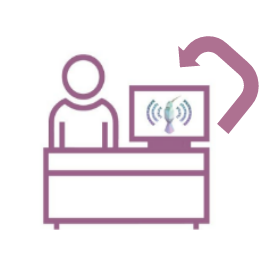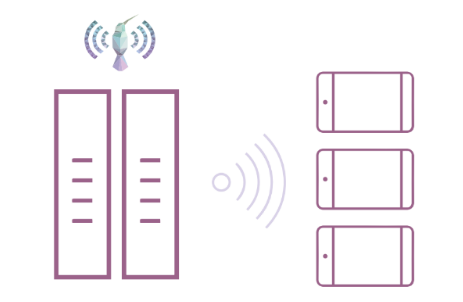Supporting continued learning during COVID-19
This article is part of a collection of blog posts related to the education in emergencies response to COVID-19.
Resources to consider if uninterrupted online learning isn’t possible
Courtesy of Learning Equality; original article published on 16 March 2020.

Last week, UNESCO shared that globally, more than 776.6 million children and youth have been dismissed from school due to COVID-19, and these numbers are only growing with schools closing around the globe. Schools are planning for a range of responses to COVID-19, including looking towards remote online learning. At Learning Equality, we are concerned for the learners with limited or no access to connectivity or hardware devices at home, and envision that the equity gap will only deepen. How do we account for equity to support educators and parents in making remote learning a universal opportunity for all? As part of Learning Equality’s efforts to minimize this gap, we are putting together guidelines and references for using our open-source learning platform, Kolibri, at home, if you want to support continued learning for members of your community, or even entire communities, who will be hit the hardest when it comes to educational access and opportunity.
Learning Equality began as an organization motivated by thinking at the margin, focusing on no or low-connectivity. From the beginning, we have tried to think deeply about how equity can drive open-source products to ultimately serve the community who has told us time and time again that uninterrupted connectivity — a precursor for online learning — is not within their realm of possibility. Given that we are an organization focused on eLearning and see the challenges facing so many communities right now during the global pandemic, we wanted to offer some short-term support to those who have reached out to us directly, and to communities more broadly, by providing guidance on how to adapt use of Kolibri for this situation.
Kolibri is an ecosystem of interacting products, and at its core is the Kolibri Learning Platform, where students and educators login and directly use digital materials to support learning and teaching. Kolibri has always been free to download and use immediately. While there is a multitude of online courses that are currently being shared to support learning, including ones that are in the Kolibri Content Library, there are two reasons why Kolibri could be beneficial.
- Once Kolibri is downloaded, installed, and provisioned with learning materials onto a device, you don’t need the Internet again. And if you initially set up a USB or external hard drive with the Kolibri installer and the desired learning materials from our library, then you can use the same USB to provision other devices without ever needing the Internet. You can also pick and choose learning materials from different sources to import those that are relevant for you, so you only download what you need.
- The learning materials available on Kolibri are openly licensed and ready for you to use. They are sourced from diverse educational organizations and, in a few cases, may have been previously organized by the local curriculum standards in select countries and/or be available in your local language.
Learning Equality’s main model has been supporting institutions, camps, schools, and other facilities to set up Kolibri in classrooms; in a room full of devices, only one will need to be installed with Kolibri and locally connected to other devices which access learning materials through a browser. (While we are currently working on designing and building Kolibri to work as the type of app that can be individually installed on tablets or phones, the model we support now is a social, offline-enabled ecosystem with educators and students.)
That being said, you can still set up Kolibri to fit your needs and we suggest exploring the following options:
- Individual at-home use: If you have one device that you’d like to set up with Kolibri to allow for individual, self-paced learning using pre-curated learning materials available in the Kolibri Content Library (which includes Khan Academy), then we suggest downloading Kolibri on your computer or laptop which serves the platform on that device, acting as both server and client. We call this the standalone client-server model. We’ve heard from parents that they have used this model when they have gone on extended road trips, or live in a rural community without access to the Internet, but still want to home-school their children. Please refer to this simplified at-home version of the Kolibri user manual to get started: learningequality.org/r/at-home-instructions

- Mini at-home classroom: If you have multiple devices in your family (say, a family computer and multiple tablets or smartphones), then you can set Kolibri up in a standard model where the computer acts as the server, and all other devices need only a browser to connect to the server via a local area network.

A typical Kolibri model includes a device installed with Kolibri, acting as a server connecting locally (with, for example, a router) to other devices such as tablets and smartphones
- For educators already implementing online learning solutions for your school district: If you’re thinking deeply about bridging the gap for your students who might not have access to the Internet at home, we invite you to explore whether Kolibri could be a short-term source of support. Kolibri can be loaded with digital materials you might already be using, such as your own worksheets or handouts, and you can supplement those with other sources from our library, such as Khan Academy. If you have developed your own courses or need to re-arrange existing learning materials to follow local curricula, you can upload and re-organize these materials on Kolibri Studio; see documentation here) in order to use them in Kolibri.
For other educational stakeholders:
- For creators of educational resources who are actively seeking ways to help: Consider applying an open license to your content (Creative Commons is a great place to start) and working with us directly at Learning Equality to distribute it by packaging the materials in a way that is usable on the Kolibri platform and other Open Educational Resource repositories — we want to help make it shareable by anyone, whether Kolibri is their tool of choice or not. Please reach out to [email protected] with any questions.
- For governments looking for a solution: If you are exploring ways to support distance learning and do not currently have a platform of your own, are looking for supplemental learning materials, or have aligned digital materials, an in-country server with Kolibri could be a potential solution for you — some guidance is available here. Email [email protected] if you have any questions.
Beyond the at-home documentation above, other helpful resources about the Kolibri Ecosystem include:
- Kolibri’s main download and documentation pages
- Our Kolibri Edtech Toolkit which provides guidance on how to implement Kolibri in your community. Start with this overview and our updated hardware guide.
If you’re stuck or you want to support others in the community, please connect on our Community Forum for general Kolibri questions. We have also started a thread to support at-home use of Kolibri if there are specific questions.
The views expressed in this blog are the author's own.



